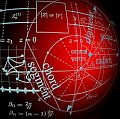Bond Value Calculator
Instructions: Use this Bond Value Calculator to compute the value of a bond, by indicating the coupon paid every period (\(C\)), the discount rate per period (\(r\)), the number of periods (\(T\)), and the bond's face value (\(F\)):
Bond Value Calculator
More about this Bond Value calculator so you can better understand how to use this solver: The value of a bond depends on the cash flow paid via the coupons, as well as the face value of the bond that is paid at maturity. These cash flows need to be discounted to get the bond value.
How do you calculate the value of a bond? What formula do you use?
You can calculate the value of a bond by using the following formula:
\[ \text{Bond Value} = \displaystyle \frac{C}{r}\left( 1 - \frac{1}{(1+r)^T} \right) + \frac{F}{(1+r)^T} \]Observe that \(T\) corresponds to the total number of periods
What other related calculations to the price of a bond can I do?
For stocks, you can try our stock value calculator. Also, you can compute the Yield to maturity (YTM calculator), which is another metric of interest.
What is the meaning of formula for the Bond Price
Without context, the formula may look a bit dry, but actually, the formula is fairly simple. The bond price is simply derived as the sum of the present value of all the flows associated to the bond.
These flows are typically the interest that are received periodically (though there are zero-coupon bonds too), plus the return of the principal in the future.

Example of a bond price calculator
Question: Find the bond value for a 12-year bond that has a $1,000 face value, that pays a yearly coupon of $50, if the discount rate is \(r = 4%\).
Solution:
This is the information we have been provided with:
| Coupon Paid \(C\) = | \(50\) |
| Discount Rate \(r\) = | \(0.04\) |
| Number of Periods \(T\) = | \(12\) |
| Bond's Face Value \(F\) = | \(1000\) |
Therefore, value of the bond is computed using the following formula:
\[ \begin{array}{ccl} \text{Bond Value} & = & \displaystyle \frac{C}{r}\left( 1 - \frac{1}{(1+r)^T} \right) + \frac{F}{(1+r)^T} \\\\ \\\\ & = & \displaystyle \frac{50}{0.04}\left( 1 - \frac{1}{(1+0.04)^{12}}\right) + \frac{1000}{(1+0.04)^{12}} \\\\ \\\\ & = & \displaystyle \frac{50}{0.04}\left( 1 - \frac{1}{1.04^{12}} \right) + \frac{1000}{1.04^{12}} \\\\ \\\\ & = & \displaystyle 50 \times 9.3851 + \frac{1000}{1.601} \\\\ \\\\ & = & \displaystyle 469.25 + 624.6 \\\\ \\\\ & = & 1093.85 \end{array} \]Therefore, given the values for the coupon, interest rate, number of periods and face value, the value of the bond is \(\text{\textdollar}1093.85\).




